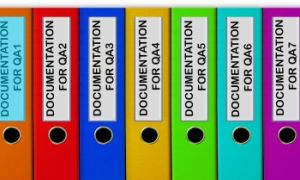In a world where classroom outcomes are often skewed by postcode, language background, or parental education, one early predictor quietly cuts through the noise: phoneme awareness. As Brady (2020) starkly highlights, this foundational skill outranks intelligence and socioeconomic status when forecasting reading success.
What Is Phoneme Awareness, Really?
Phonemes are the smallest units of sound in spoken language—think /c/, /a/, /t/ in “cat.” Phoneme awareness is a child’s ability to hear, distinguish, and manipulate these sounds. Unlike letter recognition, it’s completely auditory. Children don’t need print in front of them to practice it—they need rich spoken language environments, playful sound exploration, and intentional scaffolding.
Why It Should Shape Sector Priorities
- Predictive Power: Studies show it’s one of the strongest indicators of literacy success, surpassing external factors often used to explain disparities.
- Trauma-Inclusive: Sound-based learning isn’t contingent on prior school exposure, structured home learning, or literacy-rich environments—making it a bridge for children affected by trauma, neglect, or system failure.
- Culturally Accessible: With the right support, phoneme play can adapt to multilingual and culturally diverse communities, allowing children to connect with their language roots while strengthening decoding skills.
From Pressure to Play: Reframing Early Practice
Current classroom cultures too often dampen phoneme learning with phrases like “Stay quiet,” “Sit still,” or “Do it right”. These adult-centered instructions limit sound exploration, especially among the most curious learners. We must shift:
- From control to curiosity.
- From silence to sound.
- From compliance to connection.
What Educators Can Do
- Embed daily sound games—alliteration hunts, rhyme riddles, silly sound swaps.
- Use visuals and physical prompts for sound blending or segmenting (e.g., moving toy animals to represent sounds).
- Prioritize child-led storytelling where invented words and playful sounds are encouraged.
- Document phoneme play in reflection notes and learning journals to link practice with outcomes.
Developing phoneme awareness early can set the trajectory for reading proficiency—regardless of a child’s socioeconomic background or measured intelligence. It’s a reminder that auditory skill-building, language-rich play, and intentional spoken interaction are not just helpful—they’re transformational.
Further Reading
Teaching Phonics To Preschoolers
Phonics Worksheets
Letterland Phonics
Phonemic Awareness in Young Children







 As an Educator in Australia, your pay rate falls under the Children’s Services Award 2010. This award states the minimum amount that an employer can
As an Educator in Australia, your pay rate falls under the Children’s Services Award 2010. This award states the minimum amount that an employer can When working as a qualified Early Childhood Teacher (with a university degree) within a service, your rate of pay will come from the Educational Services
When working as a qualified Early Childhood Teacher (with a university degree) within a service, your rate of pay will come from the Educational Services When working as a Diploma Qualified Educator your pay rate is from the Children's Services Award 2010. This Award states your minimum rate of pay
When working as a Diploma Qualified Educator your pay rate is from the Children's Services Award 2010. This Award states your minimum rate of pay When working as a Cert 3 Qualified Educator, your pay rate is from the Children's Services Award 2010. This Award states your minimum rate of
When working as a Cert 3 Qualified Educator, your pay rate is from the Children's Services Award 2010. This Award states your minimum rate of Educational Leaders play a crucial role in their early childhood service by ensuring that the educational program aligns with best practices and supports the holistic
Educational Leaders play a crucial role in their early childhood service by ensuring that the educational program aligns with best practices and supports the holistic In early childhood education and care, ratios are more than a technicality—they are a frontline safeguard. Every child deserves responsive supervision, emotional connection, and developmental
In early childhood education and care, ratios are more than a technicality—they are a frontline safeguard. Every child deserves responsive supervision, emotional connection, and developmental With the new national child safety reforms kicking in on 1 September 2025, early childhood services like yours have a real opportunity to lead the
With the new national child safety reforms kicking in on 1 September 2025, early childhood services like yours have a real opportunity to lead the Here’s a comprehensive Mobile Phone and Smart Watch Policy tailored for early childhood education and care (ECEC) services in Australia, aligned with the latest 2025
Here’s a comprehensive Mobile Phone and Smart Watch Policy tailored for early childhood education and care (ECEC) services in Australia, aligned with the latest 2025 The Sea of Fish Challenge is a national initiative that invites children, educators, families, and communities to create and display fish artworks as a symbol
The Sea of Fish Challenge is a national initiative that invites children, educators, families, and communities to create and display fish artworks as a symbol Across the early childhood education and care sector, educators are sounding the alarm: current staffing ratios are insufficient to deliver safe, meaningful, and developmentally appropriate
Across the early childhood education and care sector, educators are sounding the alarm: current staffing ratios are insufficient to deliver safe, meaningful, and developmentally appropriate


